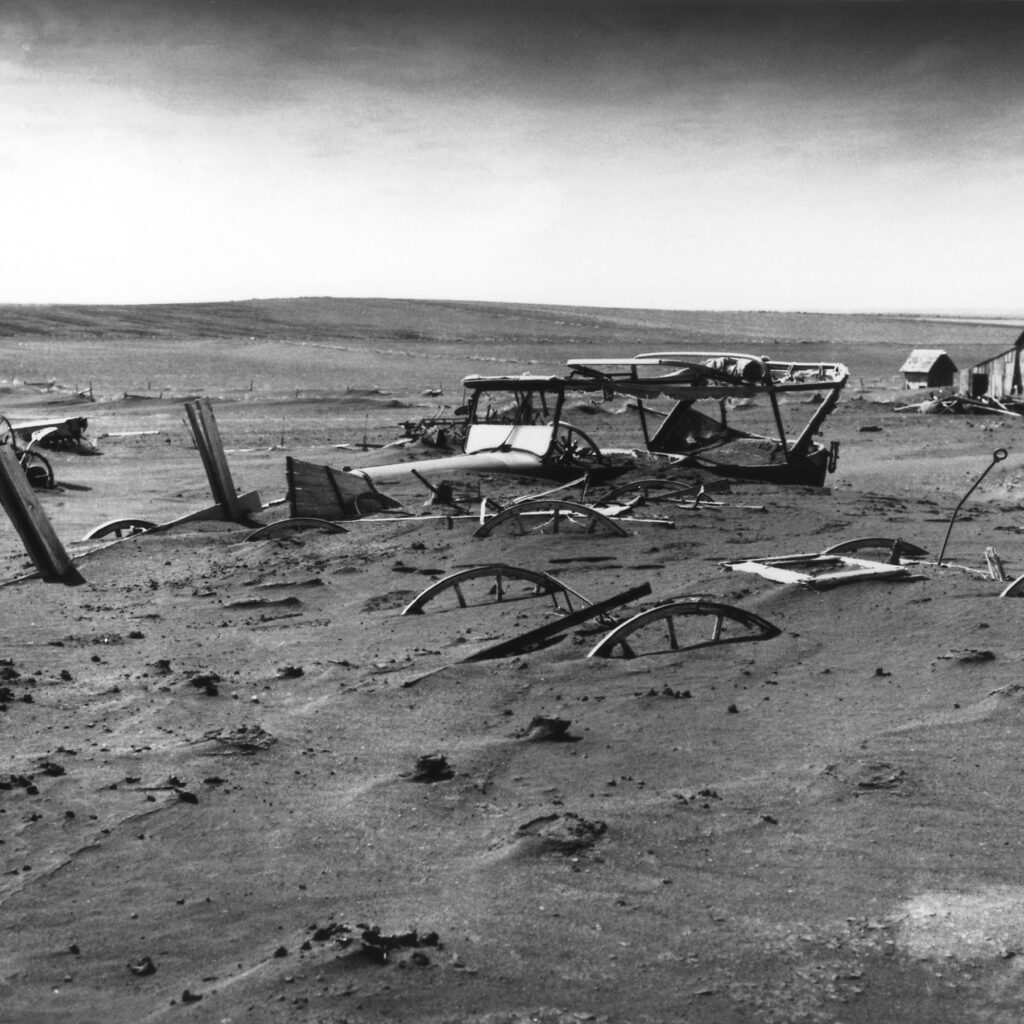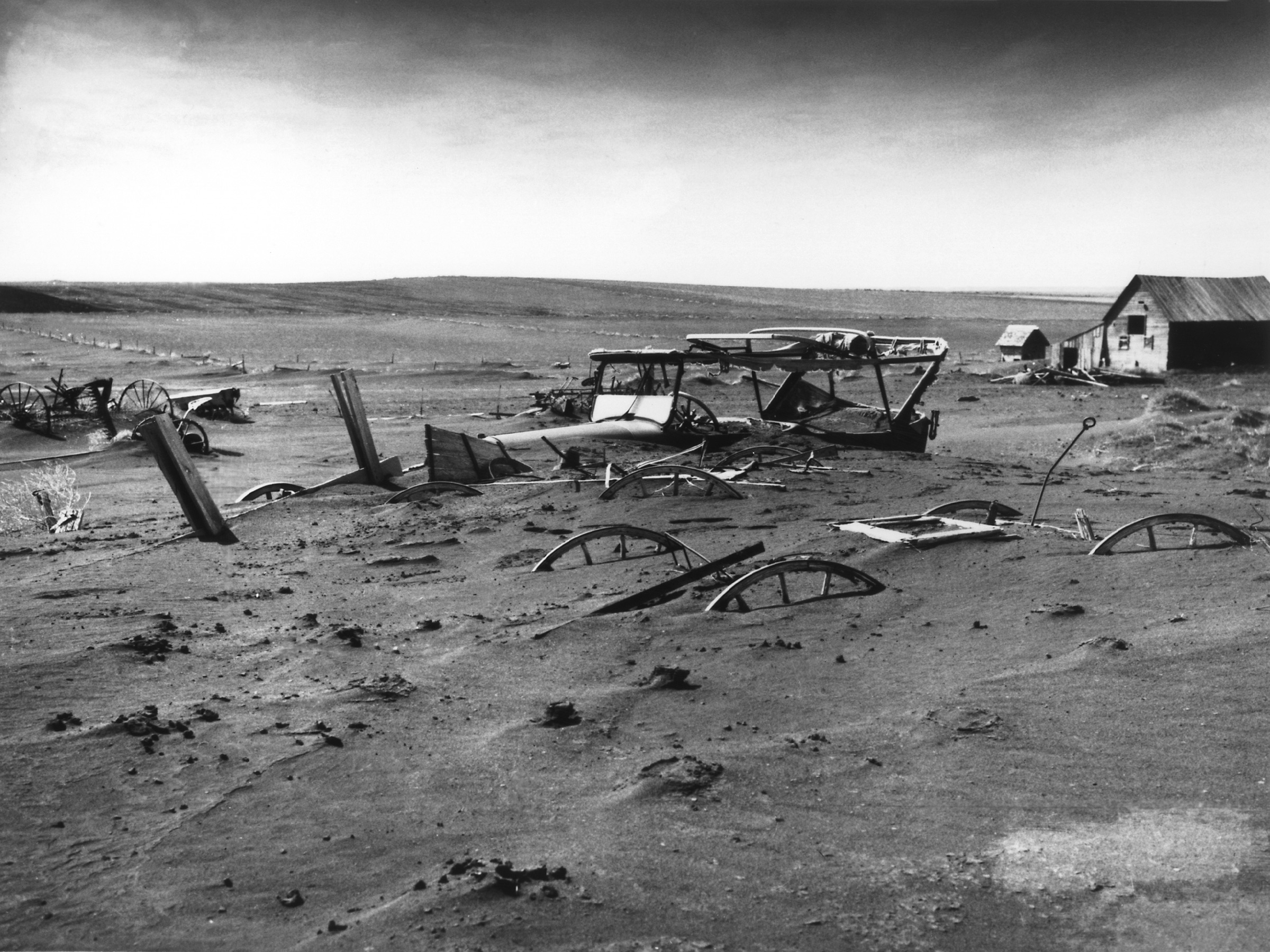Dust bowl ballads: Great Plains dust levels rising at 5% per year

<p>PHOTO CREDIT: United States Department of Agriculture.</p> <p>Buried machinery in barn lot in Dallas, South Dakota, United States during the Dust Bowl, an agricultural, ecological, and economic disaster in the Great Plains region of North America in 1936.</p>

PHOTO CREDIT: United States Department of Agriculture.
Buried machinery in barn lot in Dallas, South Dakota, United States during the Dust Bowl in 1936.
University of Utah – Atmospheric dust levels are rising at an annual rate of five per cent in the United States Great Plains, raising concerns over a return of the Dust Bowl of the 1930s, according to a new study from the University of Utah that examined data over the past three decades.
The trend of rising dust parallels expansion of cropland and seasonal crop cycles, suggesting that farming practices are exposing more soil to wind erosion, according to the report
“We can’t make changes to the earth surface without some kind of consequence just as we can’t burn fossil fuels without consequences,” said Andy Lambert, lead author of the study and a recent University of Utah graduate. “So while the agriculture industry is absolutely important, we need to think more carefully about where and how we plant.”
The research was published in Geophysical Research Letters and was funded by the Utah Science Technology and Research (USTAR) initiative, the Global Change and Sustainability Center at the University of Utah, and the Associated Students of the University of Utah.
The Dust Bowl of the 1930s was caused as a drought that stretched from Mexico to Canada was exaggerated by the fact that large tracts of grassland had been converted into cropland the previous decade, leaving the land vulnerable to erosion.
“The result was massive dust storms that we associate with the Dust Bowl,” said Lambert. “These dust storms removed nutrients from the soil, making it more difficult for crops to grow and more likely for wind erosion to occur.” After years of drought, dust and hardship, rain finally began to fall again, although Lambert noted that soils in some areas have still not fully recovered.
Increased demand for biofuels, which started in the early 2000s, has spurred another expansion of farmland, echoing the 1920s. In the span of five years, from 2006 to 2011, 2,046 square miles of grassland across the Midwest was converted to cropland.
At the same time, parts of the Great Plains experienced longer and more severe droughts in the 20th century. The future of drought in that region is, so far, uncertain, but the potential for a warmer, drier Great Plains has Lambert and co-author Gannet Hallar, associate professor of atmospheric sciences, bringing up the word “desertification” in relation to the potential future of the region.
The focus of the study was to quantify how much the amount of dust in the atmosphere over the Great Plains had changed in recent decades. To do that, they tapped into instrumentation that measures atmospheric haziness from the ground up and from space down. From the ground, the IMPROVE monitoring network is run by several federal agencies and measures the amount of particulate matter in the air at sites, including national parks, around the country. Another ground-based network, the NASA-run AERONET, watches for how much incoming sunlight is blocked by dust and aerosol particles in the air. From space, an instrument called MODIS does the same job, looking at how much light reflected from the surface is similarly blocked by particles.
“The amount of increase is really the story here,” said Hallar, noting that a five per cent annual increase over two decades works out to a 100 per cent increase in dust loading. “This is not a small signal to find.”
Correlations between dust in the atmosphere and crop timings were also found. In Iowa, where soybeans have been a major expanding crop, increases in dust appeared in June and October—planting and harvesting months, respectively, for soybeans. In the southern Great Plains states, where corn is a more dominant crop, dust increases appeared in March and October—again correlating to corn planting and harvesting seasons.
“I think it’s fair to say that what’s happening with dust trends in the Midwest and the Great Plains is an indicator that the threat is real if crop land expansion continues to occur at this rate and drought risk does increase because of climate change,” said Lambert. “Those would be the ingredients for another Dust Bowl.”

PHOTO CREDIT: Image by Talie Lambert. The hazards of increased atmospheric dust.


